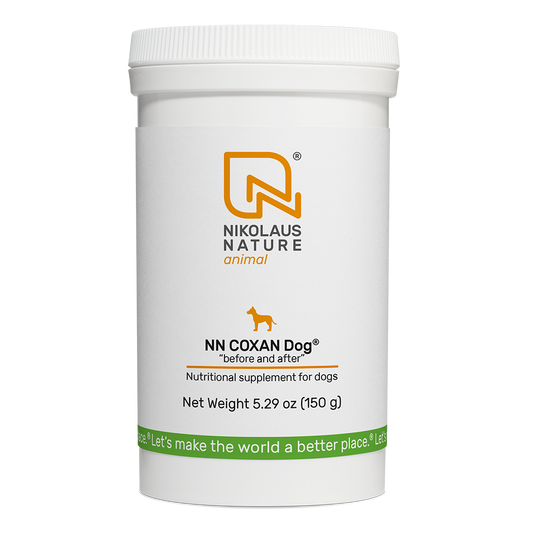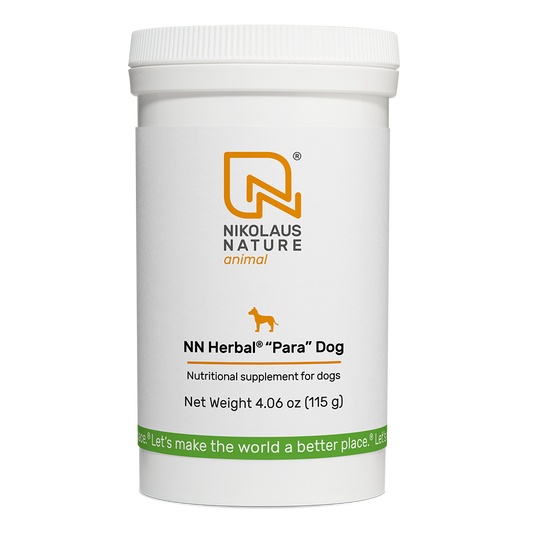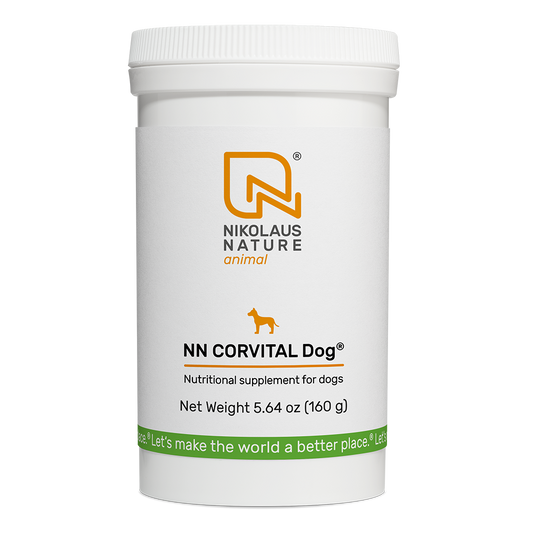Essential Tips to Prevent Joint Problems in Dogs
Did you know that approximately 20% of dogs suffer from joint problems and this number increases significantly with age? Watching your dog sprint across the yard or leap to greet you is a heartwarming sight, but it also highlights the importance of their joint health. Just like us, dogs can experience pain and discomfort in their joints.
As they age, the wear and tear on their joints can lead to conditions like osteoarthritis. It can affect their ability to run, play, and even climb stairs. So, it’s important to understand how to prevent joint problems in dogs.
Keep reading to learn the essential tips and strategies to help your dog maintain healthy joints!!

Common Types of Joint Problems in Dogs
The first step toward prevention is understanding the types of joint problems in dogs. Each joint type has its unique issues, but they all require attention and care.
Carpal Joint Problems in Dogs
The carpal joint in dogs functions similarly to the human wrist. If your dog is limping or showing reluctance to put weight on their front paws, it can be a sign of carpal joint problems.
Carpal hyperextension is one of the more common issues in working breed dogs. In this condition, the ligaments around the wrist overstretch which causes instability and discomfort. It can be treated by rest and immobilization but in severe cases, surgery is necessary to fuse the joint and restore function.
Luxation and subluxation are other conditions that can affect the carpal joint. Luxation occurs when the bones in the joint are fully dislocated while subluxation involves a partial dislocation and is often caused by chronic ligament weakness.
Treatment ranges from rest and anti-inflammatory medications to physical therapy. Veterinarians also recommend dog braces for the wrist area for support.
Hock Joint Problems in Dogs
The hock joint or ankle joint is located in the rear legs of your dog. It plays an important role in running or jumping. One of the most common injuries that affects the hock joint is damage to the Achilles tendon. If your dog tears or strains this tendon, they may have difficulty extending their hock, and in severe cases, their leg could drop closer to the ground.
Another issue to be aware of is tarsal luxation. It occurs when the bones in the hock become dislocated. This injury is usually caused by trauma, such as being hit by a car or falling.
Recovery from hock injuries generally includes long periods of rest and rehabilitation, but with the right care, most dogs can regain full function of the joint.
Stifle Joint Problems in Dogs
The stifle joint in dogs is just like the knee joint in humans. A common issue that affects this joint is the rupture of the cranial cruciate ligament (CCL), which is similar to an ACL injury in humans. It affects larger breeds such as Labradors, Rottweilers, and German Shepherds.
If your dog suddenly shows signs of lameness in a hind leg or has trouble bearing weight, this may indicate a CCL injury.
Another concern related to the stifle joint is patellar luxation. It is more common in smaller breeds. This condition occurs when the kneecap dislocates from its normal position and you can see your dog kicking their leg to try to get the kneecap back into place.
Surgical options for treating both cruciate ligament injuries and patellar luxation often include procedures like tibial plateau leveling osteotomy (TPLO) or medial patellar luxation repair.
Hip Joint Problems in Dogs
Hip joint problems like Hip dysplasia are common in larger breeds. It is a genetic condition where the hip joint fails to develop properly. This improper formation results in a loose joint, which turns into arthritis later. Breeds such as German Shepherds, Golden Retrievers, and Great Danes are more vulnerable to this problem.
Early signs of hip dysplasia in your dog include struggling to get up, having trouble climbing stairs, or exhibiting a “bunny hop” gait. While there’s no proper cure for this condition, you can prevent it if detected in early stages.
Smaller breeds can also experience hip joint problems like Legg-Calvé-Perthes disease. This condition results in the degeneration of the femoral head. Breeds like Yorkshire Terriers and Miniature Poodles are especially at risk.
Treatment typically involves surgery to excise the damaged portion of the bone.

Signs and Symptoms of Joint Problems in Dogs
Identifying the early signs of joint problems can make a significant difference in your dog's quality of life. Dogs are often adept at hiding pain, so being vigilant is essential.
Common symptoms include limping, stiffness, and difficulty getting up or climbing stairs. You might also notice changes in your dog’s behavior, such as decreased enthusiasm for walks or playtime. These signs can indicate discomfort and the need for medical attention.
Paying close attention to your dog's movements and daily habits can offer valuable insights into their joint health. If you notice any strange behaviors, consult your vet as soon as possible. Taking prompt action can prevent further complications and improve your dog's comfort and quality of life.
How to Prevent Joint Problems in Dogs
Prevention is always better than cure. Here are some key strategies to prevent joint issues in dogs.
Maintain a Healthy Weight
Keeping your dog at a healthy weight is one of the most effective ways to prevent joint problems. Excess weight puts additional stress on on joints, particularly the hips and knees, leading to conditions like osteoarthritis. Research indicates that adipose tissue secretes inflammatory hormones, that worsen joint pain and inflammation.
To achieve a healthy weight:
- Schedule regular check-ups with your veterinarian to monitor your dog's weight and overall health.
- Adjust food portions based on your dog's age, size, and activity level.
- Opt for low-calorie treats and avoid table scraps.
Provide Joint-Friendly Nutrition to Your Dog
Nutrition plays a vital role in maintaining joint health. A diet rich in anti-inflammatory ingredients can help reduce the risk of joint issues.
Key nutrients include:
- Omega-3 fatty acids, Found in oily fish like salmon, these fatty acids help reduce inflammation and support joint health.
- Natural anti-inflammatory ingredients like turmeric and ginger can alleviate joint pain and stiffness due to their anti-inflammatory properties.
- Green-lipped mussel is a superfood known for its ability to reduce pain and improve mobility in dogs suffering from arthritis.
Ensure Regular, Low-Impact Exercise
Regular exercise is essential for maintaining joint health but, it’s important to choose activities that are low-impact. Swimming and walking are excellent options that provide cardiovascular benefits without straining the joints.
Avoid activities that involve sudden twists and turns, as these can lead to joint injuries. Instead, focus on consistent, gentle exercises that promote joint flexibility and muscle strength.
Consider Joint Supplements for Dogs
Joint supplements can be an effective preventive measure for dogs prone to joint issues. Supplements like NN COXAN Dog® contain essential ingredients such as glucosamine, chondroitin, and MSM (methylsulfonylmethane), which are widely recognized for their ability to support joint health and alleviate pain.
These supplements repair the cartilage and reduce inflammation. They are particularly beneficial for older dogs or breeds predisposed to joint problems.
Use of Dog Ramps and Carpets
Dog ramps and carpets reduce the physical strain on joints, particularly in homes with stairs or slippery floors.
Ramps can be used to help your dog access furniture, vehicles, or other elevated areas without jumping. This minimizes stress on the joints and reduces the risk of injury. Carpets provide additional traction and cushioning, making it easier for dogs to move around comfortably.
By implementing these modifications in your home you can make a big difference in your dog's overall comfort and joint health. They are especially beneficial for older dogs or those with existing joint issues.

Preventing Joint Problems in Young Dogs
Preventing joint problems in young dogs starts with proper care during their early stages of life. Make sure your puppy’s food contains the right mix of vitamins, minerals, and proteins needed for growth. Look for foods specifically formulated for puppies.
Controlled exercise is another key factor. Puppies have growing bodies, so activities should be age-appropriate and not put too much stress on their developing joints. Avoid high-impact exercises like jumping from heights or excessive running until they are fully grown.
Regular vet check-ups are important. It’s also a good idea to use a harness instead of a collar to reduce neck strain and prevent injuries caused by pulling on the leash.
Treatment Options for Dogs with Joint Problems
Despite our best efforts, joint problems can still occur. Fortunately, there are several treatment options available to manage and alleviate joint pain in dogs.
Non-surgical approaches often include weight management, physical therapy, and the use of nonsteroidal anti-inflammatory drugs (NSAIDs) like carprofen, to alleviate pain and inflammation.
Anticonvulsant medications such as gabapentin and tramadol may also be prescribed for added pain relief.
A recent advancement in treatment is Librela, a monthly injectable therapy approved by the FDA specifically for managing osteoarthritis pain in dogs.
Research indicates that Librela effectively reduces pain and improves mobility, making it a promising option for long-term management of joint issues. Studies have shown that dogs receiving Librela experience significant improvements in their quality of life.
For more severe cases, surgical interventions may be necessary. Total hip replacement (THR) is a common procedure for advanced hip dysplasia, where the damaged joint is replaced with synthetic components, yielding excellent outcomes in 90-95% of cases.
Other surgical options include femoral head ostectomy (FHO) and triple pelvic osteotomy (TPO), particularly for younger dogs.
Ongoing studies are exploring innovative therapies such as platelet-rich plasma and stem cell treatments, which show promise in improving joint function and mobility with minimal adverse effects.
Conclusion
Joint health is vital for your dog's overall well-being and longevity. By understanding the common joint problems, recognizing symptoms, and implementing preventive measures, you can help your dog enjoy an active and pain-free life. By taking proactive steps early and maintaining regular veterinary care you can prevent joint problems in dogs.
Remember, your dog relies on you for their care, and protecting their joints is an essential part of that responsibility. Together, you can work towards a healthier, happier life for your four-legged friend.
FAQs
What are the early signs of joint problems in dogs?
Early signs of joint problems include limping, stiffness, and difficulty rising or climbing stairs. Changes in behavior, such as decreased interest in walks or play, can also indicate joint discomfort.
What breeds are more prone to joint problems?
Large breeds like German Shepherds, Labrador Retrievers, and Golden Retrievers are more prone to joint problems due to their size and genetic predispositions. However, any dog breed can experience joint issues.
At what age do dogs typically develop joint problems?
Joint problems can develop at any age, but they are more common in middle-aged to senior dogs. Some breeds may show signs earlier due to genetic factors.
What joint problems are more common in older dogs?
Older dogs are more likely to develop arthritis, hip dysplasia, and degenerative joint disease. These conditions result from wear and tear over time and can significantly impact mobility.
When should I consult a vet for my dog's joint problem?
Consult a veterinarian if you notice any signs of joint pain, such as limping, stiffness, or changes in behavior. Early diagnosis and intervention can prevent the progression of joint problems and improve your dog's quality of life.
Sources:
- Prevalence and Causes of OA, https://aaha.org/wp-content/uploads/2019/04/mobilitymatters.pdf
- A Review of Osteoarthritis and Obesity, https://pubmed.ncbi.nlm.nih.gov/19750285/
- FDA Approves First Monoclonal Antibody for Dogs with Osteoarthritis Pain, https://www.fda.gov/animal-veterinary/cvm-updates/fda-approves-first-monoclonal-antibody-dogs-osteoarthritis-pain
- Canine Total Hip Replacement, https://vhc.missouri.edu/small-animal-hospital/surgery/canine-total-hip-replacement/
- Therapeutic Potential of Platelet-Rich Plasma in Canine Medicine, https://www.ncbi.nlm.nih.gov/pmc/articles/PMC8791002/
- Canine stem cell therapy, https://www.rvc.ac.uk/small-animal-vet/specialist-referrals/advanced-techniques/stem-cell-clinic/information-for-dog-owners







